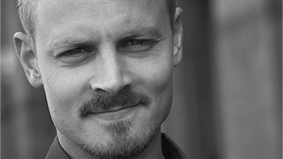Charles Handy, Irish philosopher, management thinker and writer, first coined the phrase The Shamrock Organisation in the late 80’s to describe an organisational structure with three distinct parts:
- The ‘core staff’, likely to be experienced or highly trained professionals, essential to continuity and maintaining detailed knowledge of organisational aims, objectives and practices.
A second ‘leaf’ comprising a ‘contractual fringe’ of specialists, perhaps including people who once worked for the organization but now supply services to it, who operate within broad guidelines but have a high degree of flexibility and discretion.
- The third leaf describes a flexible work-force of part-time, temporary or seasonal roles. Whilst they are employed on a casual basis, the value that they bring is recognised in the way in which they are managed, and they are close enough to the organization to feel some degree of commitment to it, ensuring they maintain a high standard of work.
When Handy described this concept in The Age of Unreason, he was at odds with the kind of industrial-era hierarchical approach that had long characterised management thinking. But his view has been somewhat vindicated since as organisations have sought more flexible ways of working.
The interesting thing is how we’ve reached a point where, powered by networked technologies and the need for businesses (in the face of rapidly changing competitive and consumer environments) to be more flexible than ever, this kind of model is about to be taken to a whole new level. We are in the eye of a perfect storm: an influx of highly talented individuals into the market; the need for organisations to adopt structures and overheads that are more adaptable and far less rigid; the opportunity afforded by technology and ubiquitous connection to enable a totally different way of working. The rise of talent networks.
In Where Good Ideas Come From, Steven Johnson talks about how ideas often lay dormant in the form of hunches, or half-ideas for years. And how it is the collision of these half-ideas that enable breakthroughs to happen. Agile enterprises that recognise this create spaces (physical and virtual) where ideas can mingle. In The Power Of Pull, Hagel, Seely & Brown talk about how ‘flows’ of knowledge have become as important as the stocks of knowledge that businesses have traditionally relied on. How it is the connected employees that bring new thinking into the organisation (thinking that is inherently non-core) allowing for innovation at the edges. McKinsey found that companies that were fully networked (intensively using social technologies to connect employees to each other and to customers, partners, suppliers) were “more likely to be market leaders or to be gaining market share but also use management practices that lead to margins higher than those of companies using the Web in more limited ways”.
This makes a lot of sense. Networks are highly efficient, benefit from a vastly broad talent base, new thinking, frictionless collaboration, flexible cost structures. Charles Handy was more prescient than he could ever have known at the time. Those organisations that ignore the opportunity for more flexible ways of working, who don’t actively encourage their people to network outside their organisation, who block employees from using technologies inside of work in ways that they naturally use them outside of work will lose competitive advantage. And lose it fast.
Image courtesy
Original Post: http://neilperkin.typepad.com/only_dead_fish/2011/03/the-shamrock-organisation-redux.html




